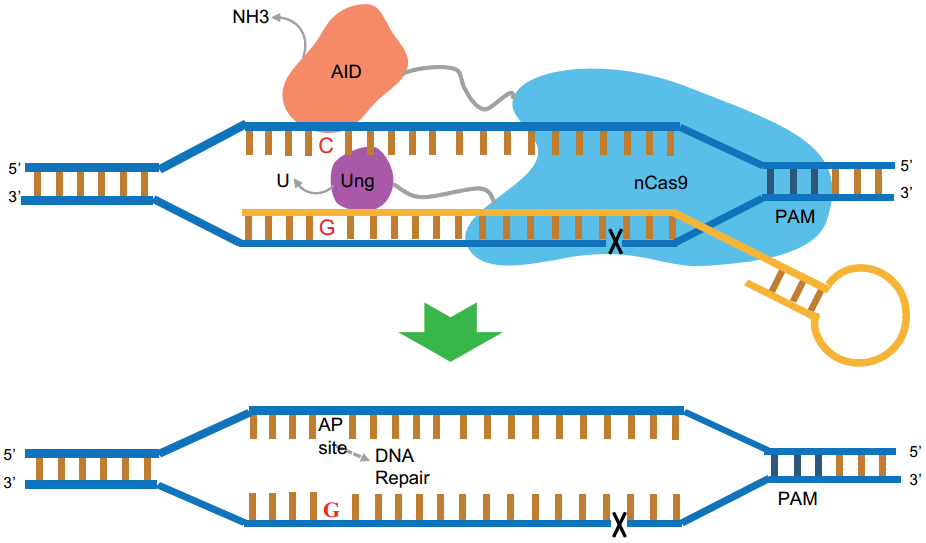
CRISPR genome editing techniques employing deaminases fused to Cas9 variants were developed for precise genomic base editing (BE). However, those BEs can yield only base transitions, including C-to-T (or G-to-A) and A-to-G (or T-to-C) substitutions; they cannot produce base transversions.
To fill the technological gaps, research groups led by Profs. ZHANG Xueli and BI Changhao from the Tianjin Institute of Industrial Biotechnology of the Chinese Academy of Sciences developed new base editors glycosylase base editors (GBEs), an enzyme complexes of fused nCas9, activation-induced cytidine deaminase (AID), and uracil-DNA glycosylase (Ung), these fusions perform a series of functions, including specific DNA binding, cleaving the amine group from C, and excising U to create apurinic/apyrimidinic (AP) sites followed by cellular repair system, and achieve specific base editing.
In wild-type Escherichia coli strains, GBE approach was found to convert C to A with an average specificity of 93.8±4.8%, an any base editing (NBE) was also developed, where, in a one, two or three-step process, any A, T, G or C could be converted to any other base.
In mammalian cells, GBE achieved C-to-G conversions with a high specificity at the 6th C in an N20 sequence, which is different from other BE techniques.
The GBE technique is the first base editing technique that allows specific C-to-A conversion and any base editing in bacteria, and also the first C-to-G conversion in mammalian cells, with high G/C conversion specificity and position specificity, GBE could be used as a major genome editing technique.
The breakthrough of this base editing technology has further improved the basic capability of China's biotechnology, and will play an important role in the independent innovation of the core key technologies of the biological industry.
The study entitled "New base editors change C to A in bacteria and C to G in mammalian cells" has been published in Nature Biotechnology.
This research was supported by the National Key Research and Development Program of China, the Key Research Program of the Chinese Academy of Science, the National Natural Science Foundation of China and the Tianjin Synthetic Biotechnology Innovation Capacity Improvement Project.

Illustration of the functional mechanism (Image by Prof. BI Changhao's group)

86-10-68597521 (day)
86-10-68597289 (night)

52 Sanlihe Rd., Xicheng District,
Beijing, China (100864)

